Most presentations in this conference appropriately celebrate the wonderful opportunities that new media provide to share Christ locally and around the world. We all learn new and exciting ideas of what is already happening using modern technology such as SD chips, blogs, Facebook, the Internet, cell phones, computers, tablets and iPads, streaming services, and others. This presentation will share examples of more "traditional technologies" that have been available, some for centuries, and are still available today, focusing primarily on many that are significant in my own life. Readers are encouraged to discover and share examples of their own in the comments section attached to this paper, and perhaps suggest more ways to use traditional technology to share the Gospel currently and with future generations.
Ink
On this 350th anniversary of the Reformation, we celebrate these special gifts of God: Martin Luther himself, Luther's translation of the Bible into the language of the common person in Germany, and the invention of the Gutenberg press. This was how God used the technology available in the 1350's to share Christ effectively.
Martin Luther and other composers and writers of Christian hymns used ink. Below is a picture of the original Ein Feste Burg ist Unser Gott penned by Luther including his signature.
With permission of her family, included below is a copy of a lovely Christmas hymn written by Mildred Gullixson, wife of ELS pastor Walther Gullixson. The music was composed by former Bethany Lutheran College president, Dr. S.C. Ylvisaker, who sent the score to the Gullixsons as a surprise gift in a Christmas card in 1954. The Bethany choir in which I sang in the early 1960s included this hymn in their Christmas concert. It appeared again recently in a display at Mrs. Gullixson's funeral, September 2, 2017, and is published in a book of Christmas carols in the Bethany Lutheran College bookstore.
In researching my family roots I have found handwritten, ink-on-paper testimonies of faith and encouragement to their descendants. With this simple medium, some messages have survived for over a hundred years while I can no longer access messages on more modern technology such as floppy disks from 20 years ago. For example, Ole Torgerson Bergland (April 5, 1779 - September 14, 1856), my great-great grandfather and father of Gunhild Olsdatter Bergland who married Bjorn Stondall mentioned below, is probably buried at West Koshkonong in Wisconsin. He composed his own epitaph and wrote it in his Bible (translated from Norwegian into English):
"With heartfelt thought this epitaph has been composed before my death in the 76th year of my life, for when mute lips no more can move, my tomb shall speak to you. Read these lines:
Seek the church diligently
Use the sacraments rightly
Forget not to rear your children well
Be ever mindful of the baptismal covenant
Always shun sin
Think often of death
Alas, that so many journey over the highway of sin.
Farewell, God be with you!"
I have read, but not verified, that the above lines were written on a wood marker that was later removed from the cemetery when it started to deteriorate, and it was donated to the Wisconsin Historical Society.
On the back of a picture of my great-great-great-great uncle Aaron Payne (born in the late 1700's) he wrote this poem: "This Holy Bible I would to all present. From Heaven to Earth these truths were sent. Then read the word, believe the same. Repent and be baptized in Jesus name. Walk by faith and live in love and soon you'll dwell with him above." My husband's great-grandmother, Pauline Heyman Kuster, wrote in her Daybook, dated 1880, "In the book of life, God's album, may your name be penned with care."
We have spotted simple signs of Christian testimony on our travels around the U.S. A few examples: A man selling oranges from his truck across from a gas station in Florida reported to us that a sign on the side of his truck has opened discussion with many people who stop to buy his oranges.
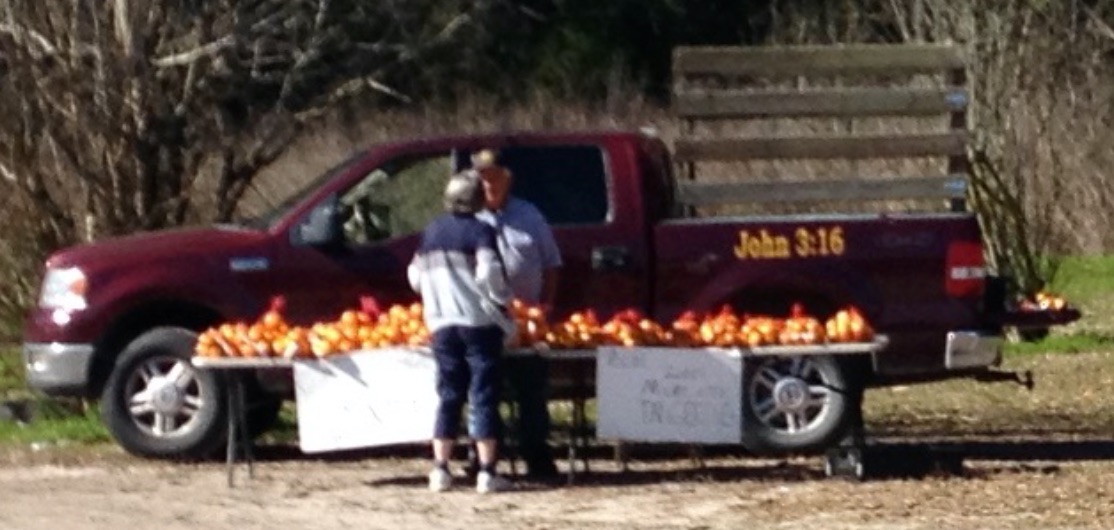
Two other signs, one in Florida the other in Nebraska, not only advertise a business with Christian management, but also deliver a Gospel message. Even a bumper sticker can send me back to the Bible.
Cloth
Wedding dresses are often passed down from generation to generation by couples who based their marriage on Scripture, making the same vow to each other made by their descendants today. Our family still has the wedding dress Pauline Heyman wore on her wedding day to Henry Kuster (19 September 1881). Another wedding dress was first worn by Anna Brue who married Helge (Henry) Mattias Tjernagel in Stanwood, Washington, on June 27, 1904. Tjernagel became pastor at the first Norwegian Lutheran Church on the Pacific coast that had been established by Rev. E. Christensen in 1876. At least the following additional women related to Anna Brue by birth or by marriage knew the story and wore that same dress on their wedding day: Helga Tjernagel Schey, Elna Tjernagel Teigen, Olivia Tjernagel Teigen, Helga Teigen Kuster, Johanna Kuster Krueger, Karen Kuster Arnold, Nicolasa Kuster, Laura Teigen Johnson, Anna Teigen Judelson, Inez Schey Bergquist, Aline Schey Tyler, and Constance Schey.
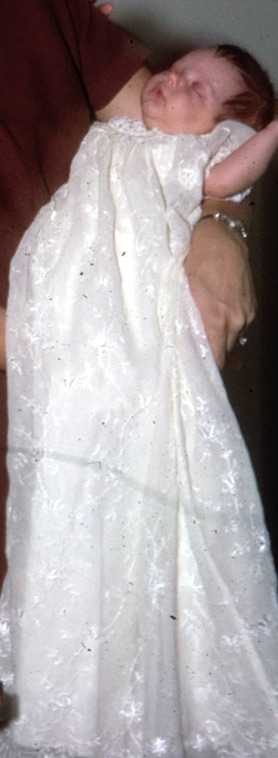
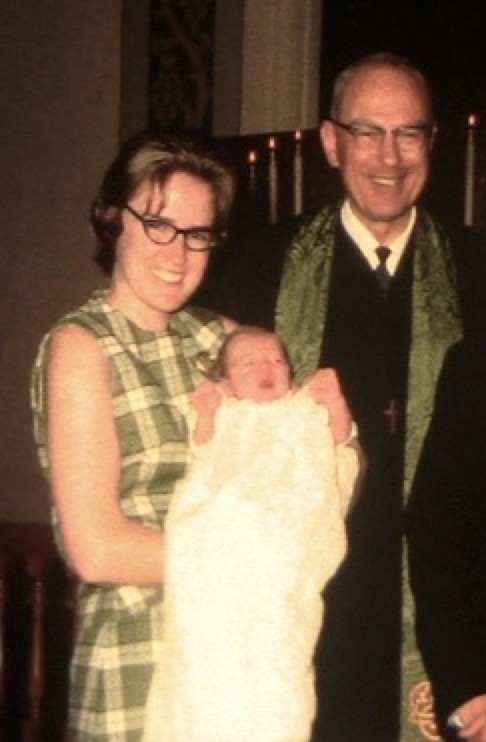
Some women use their wedding dress material to make a baptism gown for their children. The baptism gown I made for our firstborn (Andrew) has been worn by four of our children and eleven of our grandchildren, whose parents and sponsors dedicated themselves, typically in a public ceremony, to remember these children in their prayers and to bring them up as members of God's family.
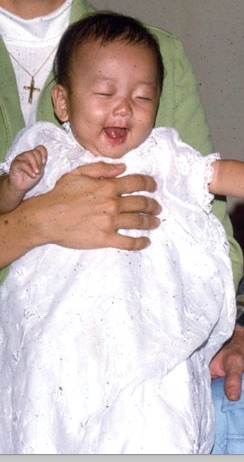
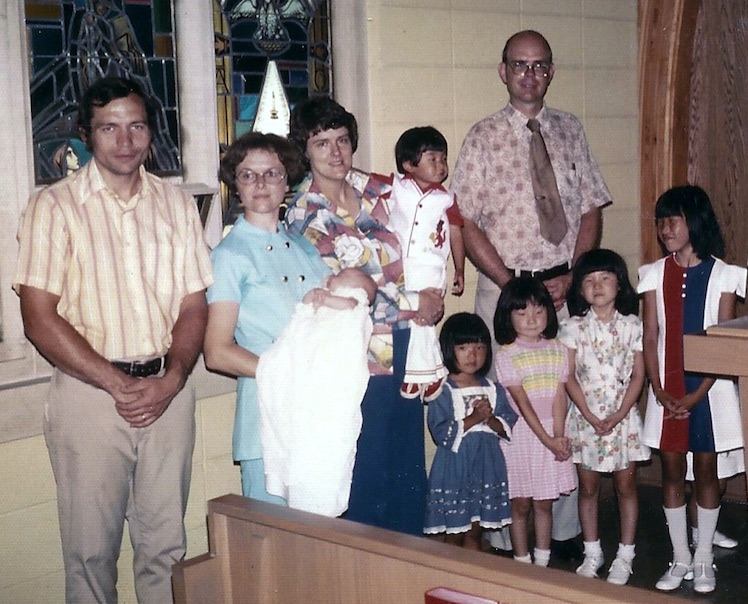
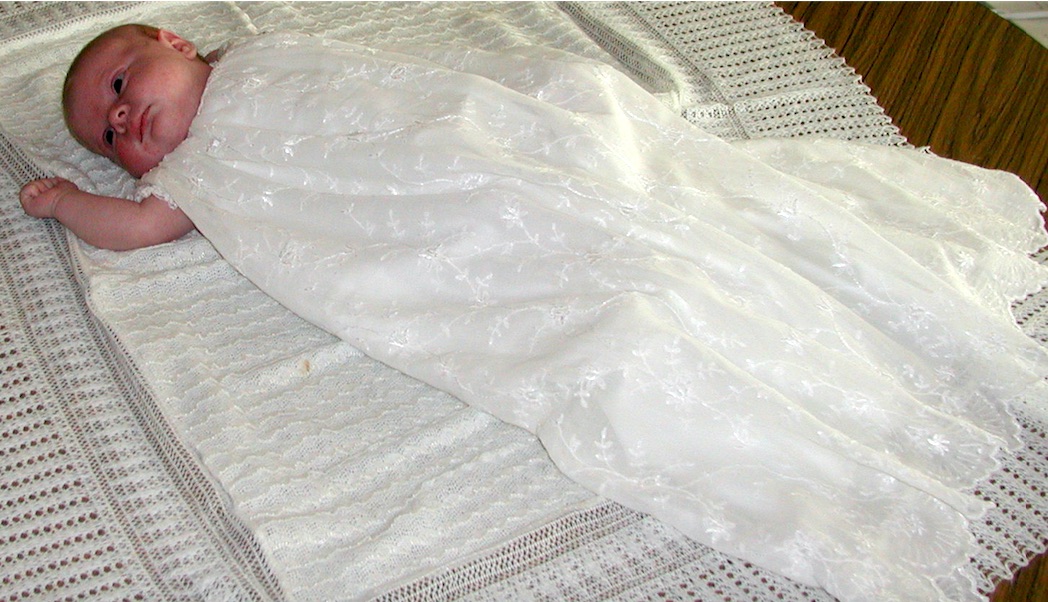
An alb is "a full-length white linen ecclesiastical vestment with long sleeves that is gathered at the waist with a cincture." The picture below is of Rev. Andrew Soule wearing an alb at his ordination (ELS) in Belview, Minnesota, where he shares the Good News every Sunday. A separate 5X7 embroidered piece accompanying the alb reads: "This alb was made for Andrew Paul Soule from century-old, hand loomed linen, woven by the Schreiber family from flax grown in their fields near Eisenach, Germany, in the shadow of the Wartburg. The linen was a gift from Dorothy Schreiber Hafliger, great aunt, and the alb was made by Dennis Soule, great-uncle." When Dorothy's grandson Garen Pay graduated from the seminary in St. Louis (LCMS) Dennis also made an alb for him. Rev. Pay is a pastor in Alcester, South Dakota.
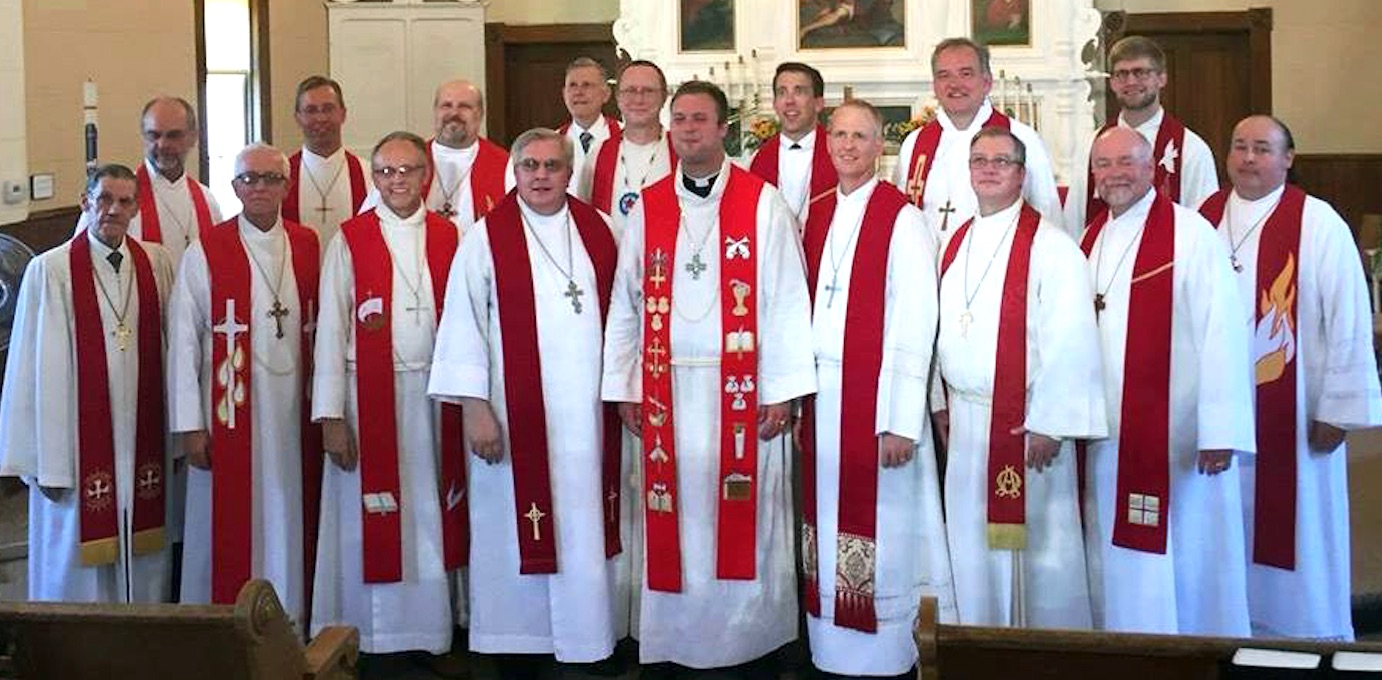
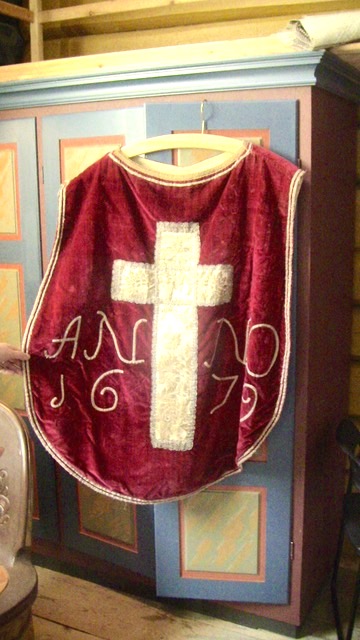
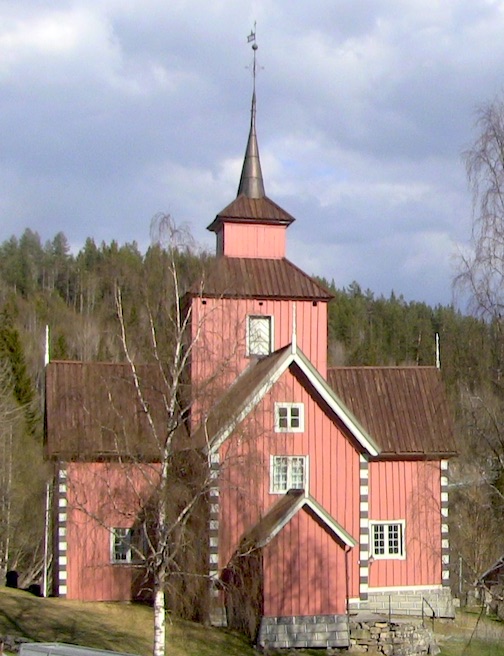
The red chasuble pictured here, made in the 17th century, is in the church in Vinje, Telemarken, Norway, and is still worn today for special occasions. One wonders if my Nestestue ancestors who were baptised, married, and buried from that church, as well as several of their children and grandchildren who later emigrated to Wisconsin, witnessed Christmas and Easter celebrations or perhaps their weddings with the pastor wearing that ancient chasuble.

Many families proudly display Scripture passages in framed needlework created by young women in past generations, such as this small part of one from 1853.
Stone
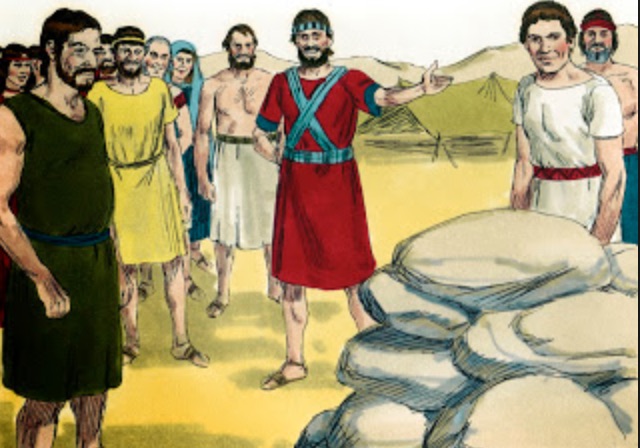
A medium unusual today but common centuries ago is mentioned in Joshua 4, when 12 stones conveyed a message and served as a reminder to future generations that God is omnipotent and because of his love saved the Israelites from their enemies. "So Joshua called together the twelve men he had appointed from the Israelites, one from each tribe, and said to them, 'Go over before the ark of the LORD your God into the middle of the Jordan. Each of you is to take up a stone on his shoulder, according to the number of the tribes of the Israelites, to serve as a sign among you. In the future, when your children ask you, 'What do these stones mean?' tell them that the flow of the Jordan was cut off before the ark of the covenant of the LORD. When it crossed the Jordan, the waters of the Jordan were cut off. These stones are to be a memorial to the people of Israel forever.'" Joshua 4:4-7 NIV
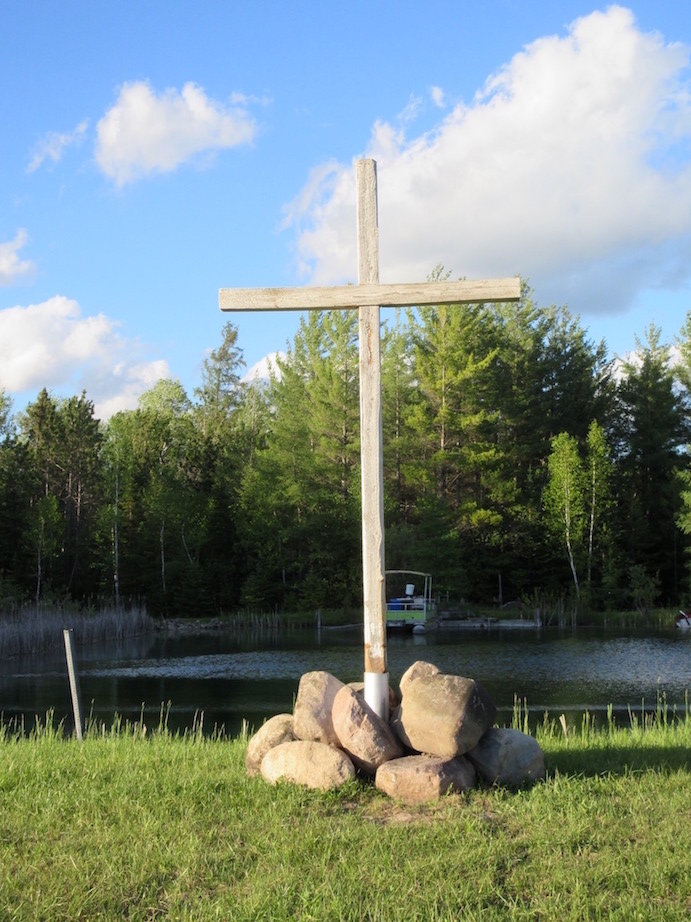
A friend Marlin Goebel used this ancient medium in his back lot next to a pond. He constructed a cross mounted on 12 stones, and emailed the following note to his children on June 1, 2017.
Subject: The cross and the crossing.
I have this cross at the pond.
In Joshua 4 we read about the collection of 12 stones from the Jordon river by the 12 tribes of Israel as a reminder to the children of the next generation that God is all powerful and out of His love for them and us had saved them from their enemies.
In 1 Peter 2: 24 "He himself bore our sins in His body on the tree so that we might die to sin and live for righteousness by His wounds you have been healed"
Both the Cross and the Crossing are reminders of God's love for us.
Take care and God bless and keep you safe.
Dad
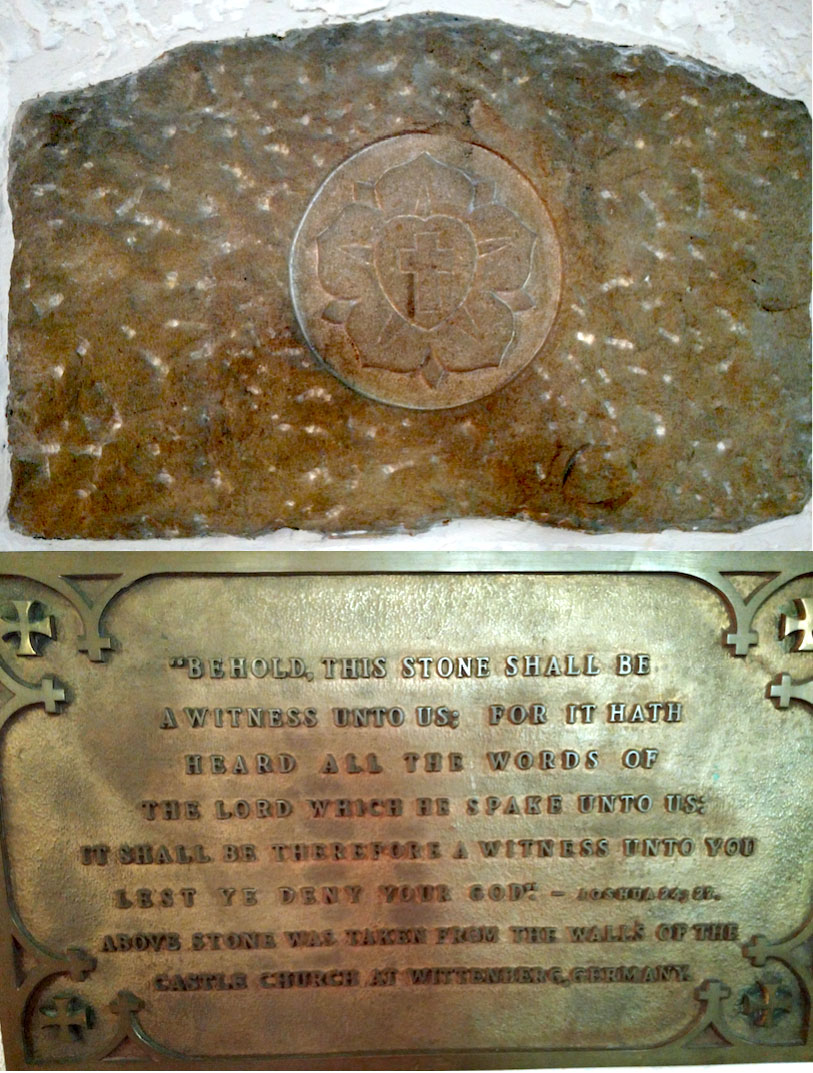
When the Bethany Lutheran Choir sang at Zion Lutheran Church (WELS) in Rhinelander, Wisconsin, in the 1960's, choir director Iver Johnson told us to check out two unusual items. The first was a likeness of a Hodag, a superstitious animal from Rhinelander folklore representing spiritual ignorance, superstition, falsehood and an unbelieving lifestyle of the early woodsmen of the area. The second was the "Luther Stone" set in the front south transept (alcove) arch. The stone had been broken out of the wall of the old Castle Church at Wittenberg, Germany, near Luther's pulpit about 25 feet from his grave. Luther's Coat of Arms, engraved on the stone, reminds church members of their ties with the Reformation. The plaque brings to mind the Bible story of the 12 stones Joshua's men made as a lasting memorial many years before. Those two stories from 55 years ago created a lasting memory of that church for me.
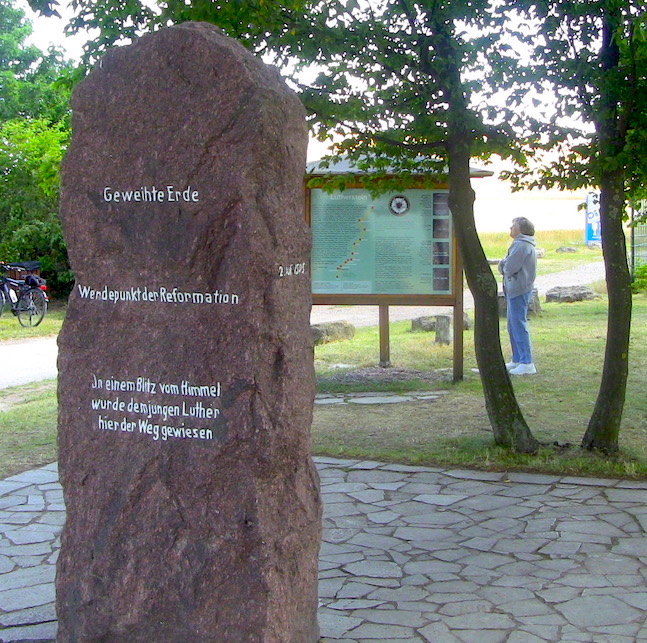
A large red granite stone near Stotternheim, Germany, marks an important spot in Lutheran history. Martin Luther was on his way from Mansfeld where his parents were living, returning to Erfurt where he was studying law. On July 2, 1505, he was caught in a severe thunderstorm and vowed if Saint Anne would save his life he would become a monk. The stone was erected 100 years ago (1917) on the 400th anniversary of the Reformation. Translation of the German on the stone reads "Here a lightning bolt from Heaven showed the young Luther his path."
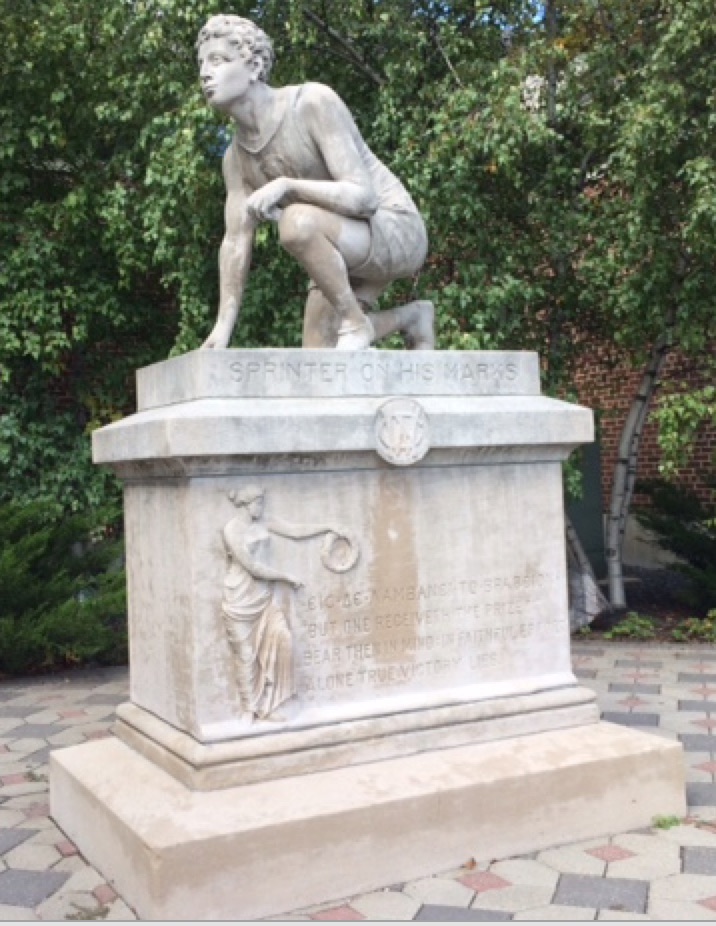
The Sprinter was a gift to Northwestern College in Watertown, Wisconsin, in 1912 from St. Matthew Lutheran Church, Milwaukee. In 1995, it was moved to the Martin Luther College campus in New Ulm, Minnesota. According to an MLC brochure, "The etchings on this Bedford limestone monument give insight into the schools the Sprinter 'attended.'... The "Venus of Capua" woman represents classical studies... 1 Corinthians 9:24 highlights both the love of God's Word and the biblical language study essential for pastoral ministry training... Apostle Paul illustrating that faithful gospel ministry calls for strenuous effort and self-denial."
In Borgund, Norway, we visited the Stave Church were my g-grandfather, Nels Torgerson (September 17, 1859 - May 4, 1929), was baptized in 1859 in a large, square stone box which served as the baptismal font.
The white marble baptismal front dedicated to the memory of H.A.Preus, where my father, my brother, my oldest son and I were baptized, is still used generations later for baptisms at Our Saviour's Lutheran Church (ELS) in Madison, Wisconsin.
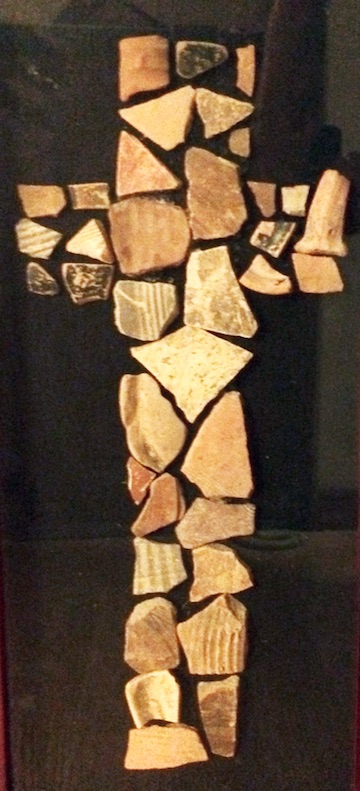
My husband and I visited Israel in 1999. Part of the adventure was working in an archeological "dig" in Tel Yafo (now part of Tel Aviv). Many mornings at 5:00 a.m. we boarded a bus to the Tel to work under the supervision of our Israeli madrikh. Part of the job was washing shards of pottery that were then evaluated according to era and kept if they were considered of archeological value. Those that weren't, were dumped down the side of the hill. At the end of our time at the dig, our madrikh said we could take home souvenirs of the pottery pieces we had dumped, and since normally it is against Israeli law to take "artifacts" out of the country he handed us a signed permission in case our luggage was checked. Copying the idea of our then pastor's wife, Rachel Kerkow, I used some of the many-centuries-old shards from Tel Yafo to make a framed cross for my husband's office.
When exploring family roots, I've met some of the nicest people in cemeteries! They are typically people with long-term ties to the community who know living descendants of people buried there. I especially enjoy finding Christian witness on many stone grave markers, not only images such as a cross, but also inscriptions.
Bjorn Åsmundson Nestestue, my great-grandfather, was born November 14, 1823 in Vinje, Telemarken, Norway. He emigrated to America in 1842, changed his last name to Stondall, and died in Wisconsin April 28, 1906. His wife, Gunhild Olesdatter Bergland was born October 13, 1827 in Fyresdal, Telemarken, and died in Wisconsin on April 12, 1917. They are buried together in the Lutheran cemetery in McFarland, Wisconsin. Their tombstone has an important message for their descendants. The verse was found in the Bergland family Bible, written in pencil and translated from Norwegian (from Grace Nelson in the Stondall and Springen family history by Dick and Marilyn (Nelson) Cyr, 1982).
"God's Word. It is our inheritance; it shall also be that of our descendants. God give us in our graves the praise, we held it high in honor. It is our help in need, our comfort in life and death; Oh, God, whatever betide, let still while the world exists, pass on to our descendants." (written by N.R.S. Grundtvig, a Danish religious and cultural leader of the early 19th century and translated into English hymnbooks as "God's Word is our great heritage.")
Aaron Payne, mentioned above, died in Oregon in 1883. Below is a picture of his tombstone in the Yamhill, Oregon, cemetery which has fallen and is nearly buried, but the top of the inscription is still visible - "IN THE NAME OF GOD THE FATHER, SON, AND HOLY SPIRIT."
My great-great-great grandfather, James Milton Maginnis (April 27, 1798-March 16, 1883), is buried in Adams County, Wisconsin. A short obituary in the local paper said, "Mr. Maginnis was a soldier in the War of 1812, but above all he gloried in being a soldier of the Cross of Christ." Along the bottom of his tombstone is the following poem:
When visiting Korea in 2012 we were able, with the help of their Korean aunt, uncle, and cousin, to visit the grave of the parents of several of our children, the Lee family, who died in 1976. All of our children born to Lee, Sam Young and Jin, Nam Soon are named on one side of the stone. On the other side, (translated from Korean by David Choi) is a verse from Psalm 9:10 "Those who know your name will trust in you, for you, O Lord, have not forsaken those who seek you."
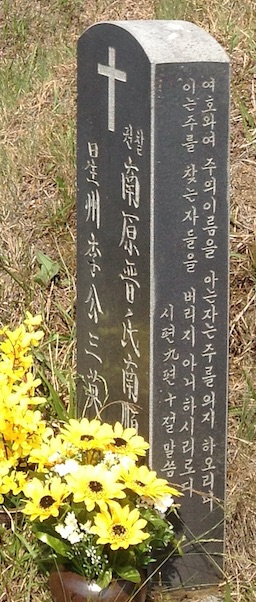
Even in recent generations family members have left a profession of their faith in granite. The two below mark people I remember well who are buried in the Princeton, Minnesota, ELS church cemetery.
Glass
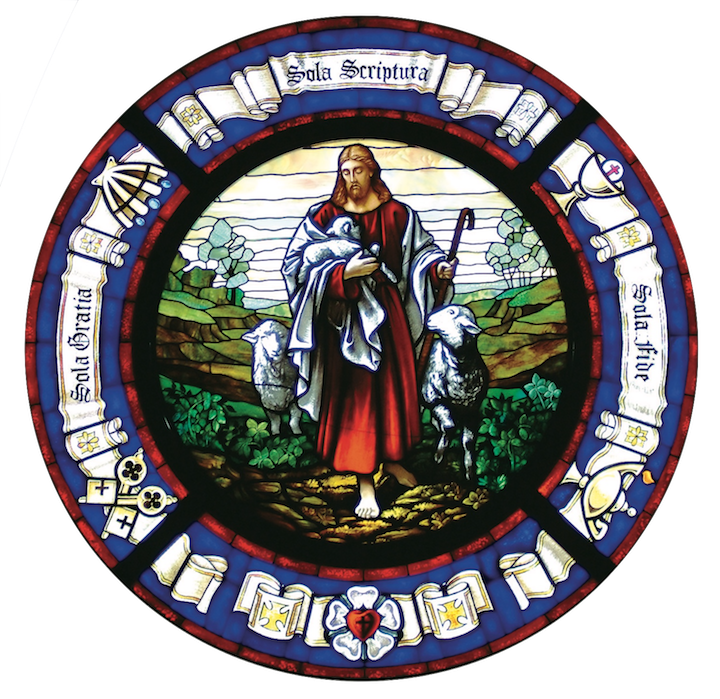
I have always been fascinated by church windows that depict important Bible stories in the glass, sometimes a single story, sometimes numerous stories in a single window. The stained glass window of the Good Shepherd in the chapel of the Bethany Lutheran Seminary (ELS) in Mankato, Minnesota, reminds seminarians of their planned vocation. Seminary President Gaylin Schmeling often refers to the window as capturing the essence of the pastoral ministry. "Pastor" = shepherd. Jesus identifies himself as the Good Shepherd, and the seminary students are studying to become "undershepherds" to care for the Lord's flock.
My confirmation verse, chosen by Pastor Nils Oesleby in 1958 was Luke 10:42 "But one thing is needful: and Mary hath chosen that good part, which shall not be taken away from her." I wonder if he was intentionally guiding me to Bethany Lutheran High School and College where the beautiful window of Jesus in Mary and Martha's home greeted me several times a day whenever I went up the steps to my dorm room. Although the sun no longer shines through that window because of remodeling, the window remains at the top of the lobby stairs in Old Main.
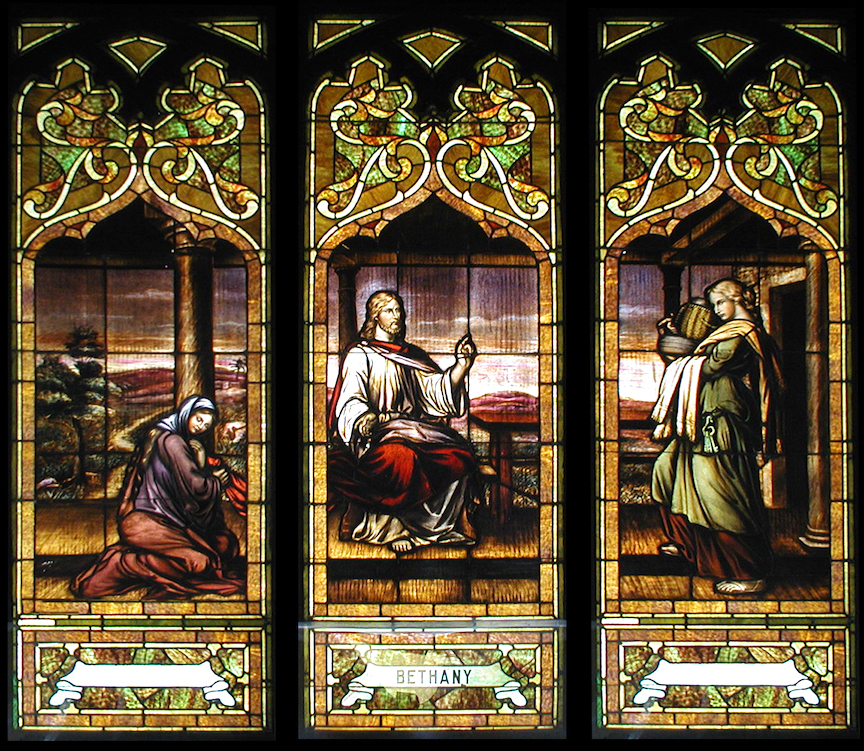
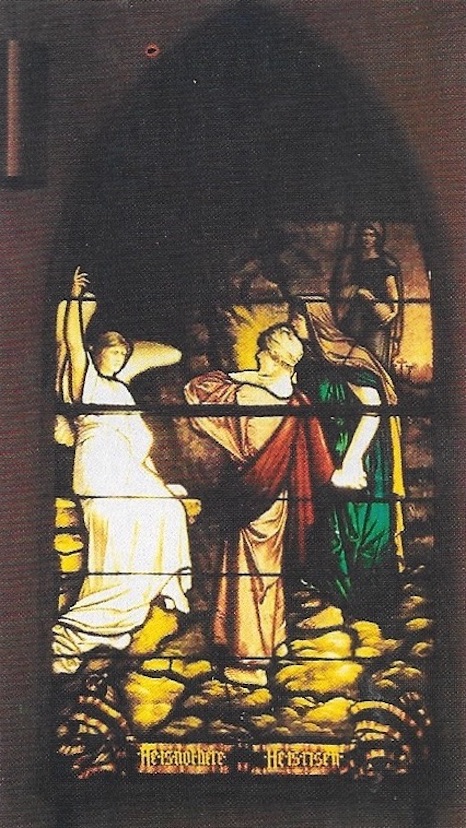
A very early "Christ in Media" in my own growing up was the altar window in the sanctuary of the old (and former) Our Saviour's Lutheran Church (ELS) in Madison, Wisconsin, where my parents were married, my brother and I were baptized and confirmed, my father was buried, my husband and I were married, and our first child was baptized. In 1901, Minnie and Mary Anderson, daughters of the church architect, Andrew Anderson, while traveling in Europe visited a small church in Molde, Norway, and were inspired by a beautiful painting of the open tomb being approached by Mary and the other women. They obtained a photograph and when they returned to Madison, the church was being remodeled. The OSLC 65-member Dorcas Society started a drive to have the picture reproduced in a window. They raised the funds ($150) and hired a Milwaukee firm specializing in stained glass windows for churches. The artist used his wife for a model of the women in the window. In 1910, the window of an angel announcing to the women "He is not here - He is risen" became the altar painting. I stared at that beautiful window with the sun streaming behind it every Sunday, understood the message pictured and when I learned to read, could read the angel's words. When Our Saviour's built a new church, that window was also moved. Unfortunately it is mounted on a wall in the back of the sanctuary so it is not in the congregation's view during services and although it is lighted, it is still much darker without the sun shining behind it.
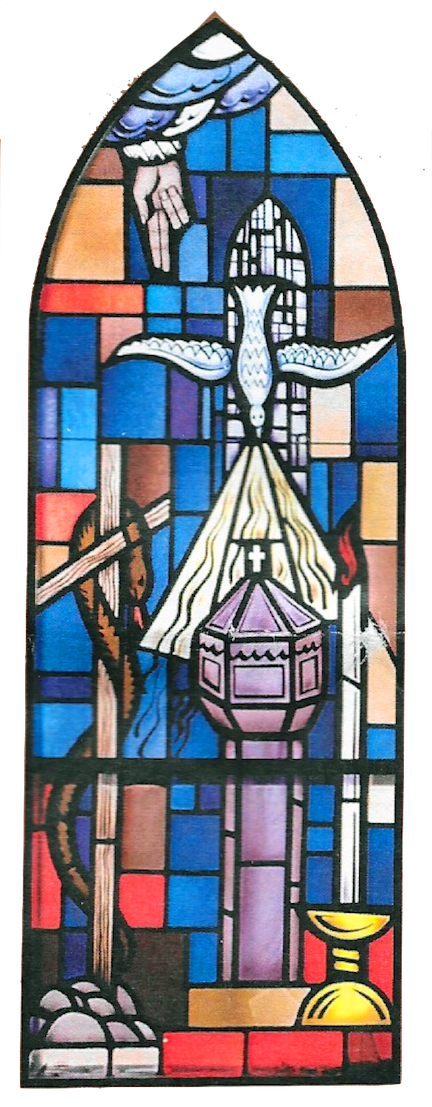
At the recent funeral service for Professor Theodore Hartwig at St. John's Lutheran Church (WELS) in New Ulm, Minnesota, the cover of the service bulletin pictured one of the many windows in the sanctuary. The back of the bulletin provided information about the message in that as well as all 31 of the beautiful windows, designed by Professor Hartwig, and installed throughout the nave, the sacristy, the south entrance and the balcony. Each area was assigned an appropriate theme. The nave is surrounded by the historic Gospel lessons representing each season of the Church Year. Some Epistles are also referenced. A booklets at the church contains Professor Hartwig's explanation of all the windows.Ted favored the window for Holy Trinity Sunday — he said, "The Creator's hand sends the Holy Spirit (dove) through Word and Sacrament (baptismal font) to create faith (candle and flame) in the hearts of believers. Jesus told Nicodemus that he had to be born again of water and the Spirit. The object and power of saving faith was also revealed to this Pharisee. Just as Moses lifted up the serpent in the desert to rescue the people from poisonous snake bites, so Jesus must conquer Satan for us by being lifted up (snake on the cross), so that everyone who believes in him may have eternal life."

Many books could be written (and probably have been) about church windows. In celebration of the Lutheran Reformation I'll mention just one more from the Cathedral in Oslo, Norway, which has several beautiful windows depicting Bible stories. But the last one on the far right side of the choir shows Martin Luther, obviously added after the formerly Catholic cathedral, which had been destroyed, had been rebuilt and became Lutheran under Christian III King of Denmark and Norway (1534 – 59), who was educated as a Lutheran and established the state Lutheran Church in 1536.
Wood/Paint
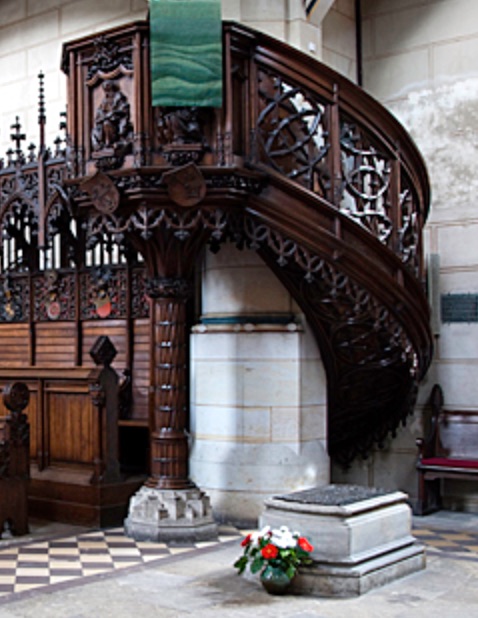
In Summer 2017 we were in Wittenberg at the Castle Church where Martin Luther nailed the 95 Theses to the door. At the base of the wood pulpit is Luther's tomb. A prayer posted inside the door of many sacristies is found in Devotions and Prayers of Martin Luther, translated by Andrew Kosten, 1956.
"Lord God, you have placed me in your church. You know how unsuitable I am. Were it not for your guidance I would long since have brought everything to destruction. I wish to give my heart and mouth to your service. I desire to teach your people, and long to be taught your work. Use me as your workman, dear Lord. Do not forsake me; for if I am alone, I shall bring all to naught. Amen. "
On September 2, 1844, Rev. J.W.C. Dietrichson preached a sermon to immigrants from Norway gathered under oak trees in Koskonong, Wisconsin. His sermon was based on Psalm 78:19: Can God furnish a table in the wilderness? The picture of that service below is by Bill Bukowski (with permission). This event became the beginning of the Evangelical Lutheran Synod. Many artifacts were constructed and preserved using the wood from these trees, and their significance continues to be passed down from generation to generation. The Otteson museum in Mankato has on permanent display the oak plaque carved with the sermon text (provided by Becky DeGarmeaux, ELS Historical society).
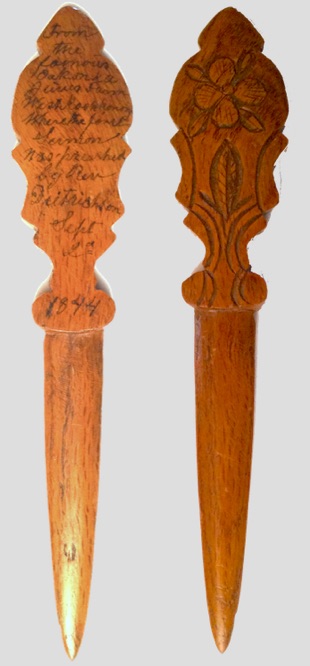
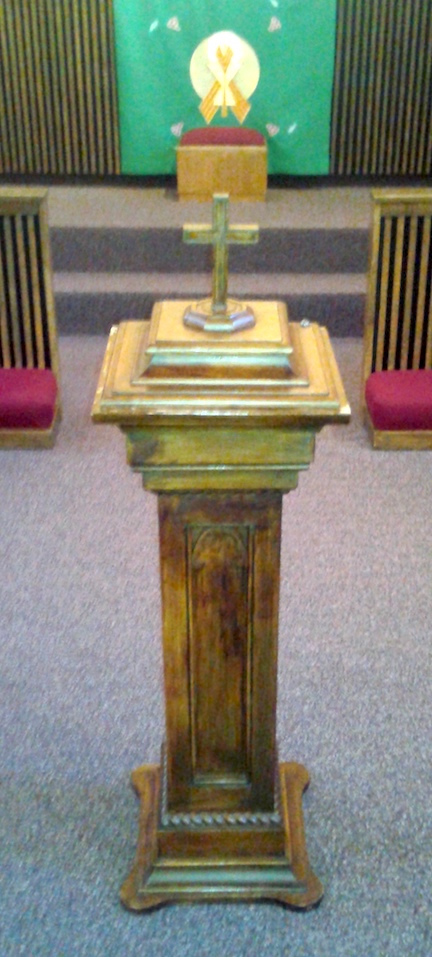
My great-great aunt, Annie Swalheim, gave me a wooden letter opener carved from a piece of one of the Oak trees and told me the story of the beginning of the ELS. On the back is written: "From the famous oak on Juves farm West Koshkonong where the first sermon was preached by Rev. Dietrichson Sept. 2, 1844." Wood from those oak trees is found in many other artifacts, including the Bethany Lutheran College ceremonial mace and the Concordia Lutheran Church (ELS) baptismal font in Eau Claire, Wisconsin.
In 1884, the newly established Trinity Evangelical Lutheran Church in Riesel, Texas, called their first resident pastor, my husband's great grandfather Rev. F. Wunderlich who was ordained there and served the church starting as a young 24 year old until 1904. He also established a Christian school associated with the parish. His oak wood desk was passed down and used by Tom's father, Rev. A.V. Kuster. Wunderlich owned property in what is now downtown Houston which he sold to purchase a buggy to serve preaching places between Waco and Houston. The old desk as well as a wooden bust of Walther and a statue of Martin Luther were also passed down to our family.
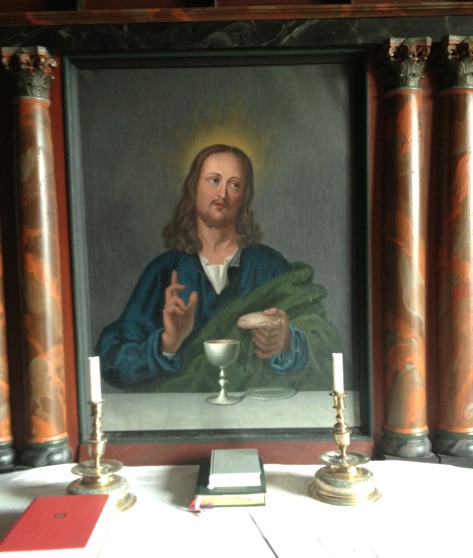
On a recent trip to Norway, I discovered several examples, across many generations, of my ancestors using media available to them to leave Christian messages to their descendants in paintings on wood (and probably also on canvas).
In a Stave Church in Dalen, Norway, the altar features a picture of Jesus offering the Lord's Supper. It was created by the son of my g-g-g-g-grandfather, Peter Christian Mikkelson Mandt.
The paintings below by my g.g.g.grandfather Aslak Åsmundson Nestestue (1774 - 1840) are in the Vinje Parish in Telemarken, Norway. He produced several altar paintings for churches. On a recent trip to Norway we discovered important Christian messages and several Biblical scenes that he had painted on the ceiling of the church in Brunkeberg. Clearly Aaslak was no Michelangelo, who had also painted a famous ceiling in the Vatican's Sistine Chapel from 1508 - 1512. Among the pictures on the Brunkeberg church ceiling are portrayals of Thomas seeing the risen Jesus and an angel announcing "He is not here, He is risen" to the women at the empty tomb. Another of the paintings depicts what one commenter describes as "the Day of Judgment with horrible detail, which catches the eye of the pastor each time he steps into the pulpit."
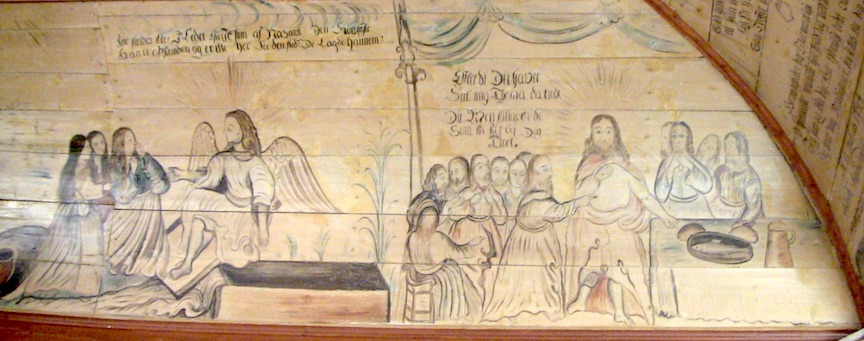

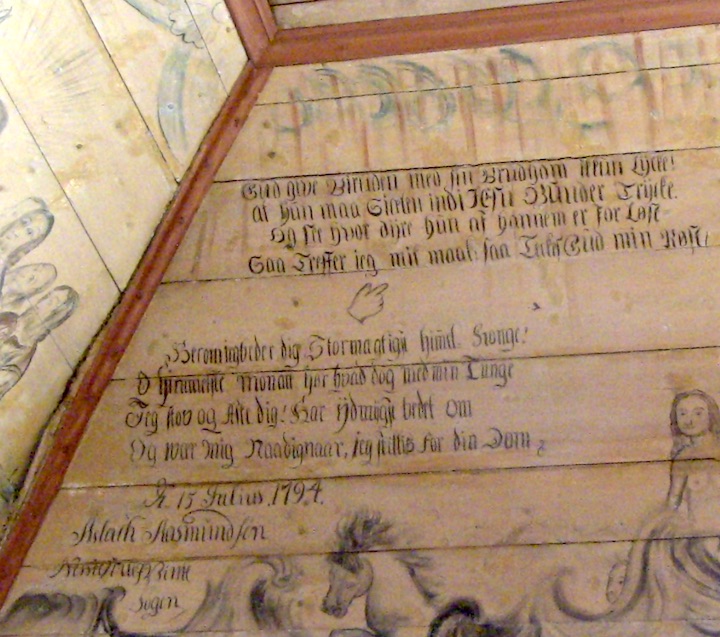
On another part of the Brunkeberg church ceiling appear eight lines written in Norwegian, dated July 15, 1794, 150 years before I was born and signed by Aslak Åsmundson Nestestue. That writing is the oldest print Christian message I've discovered from my direct ancestors. It celebrates a bride's entrance for her wedding and attests to his own extensive knowledge of Scripture and strong Christian faith. The picture and the words were referring to the Church as the bride of Christ (Rev. 21:2) "Then I John saw the holy city, new Jerusalem, coming down out of heaven from God, prepared as a bride adorned for her husband." It is translated as follows (with gratitude to Mark DeGarmeaux, Bethany Lutheran College):
God grant the bride with her bridegroom only happiness!
That she may press her soul in Jesus' wounds.
And see how dearly she is by Him redeemed,
Then I reach my goal, and my voice gives thanks to God.
Concerning this, I pray to Thee, O Almighty, heavenly songs;
O heavenly One, please hear what, with my tongue,
I, dust and ashes, to Thee have prayed for,
And be gracious to me when I am set before Thy judgment.
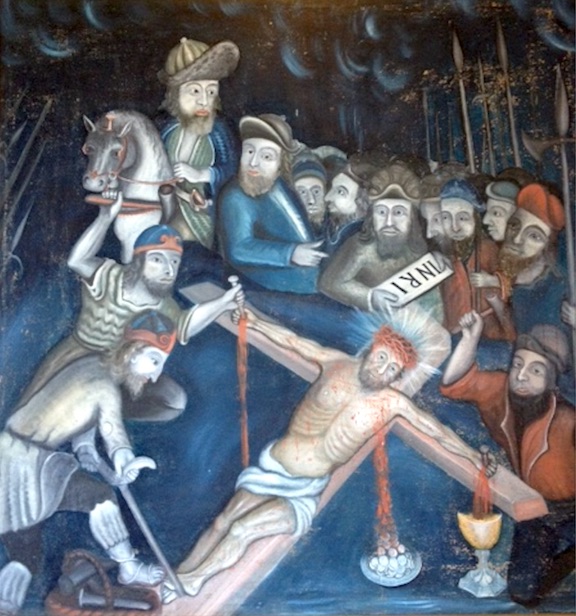
Thanks to the pastor of the church in Vinje, who happened to be in charge of three churches, we also were able to see two pictures created by Nestestue in the Nesland church. One was the graphic altar painting from the old stave church that had been destroyed, but the altar picture was rescued and is now mounted in the back of the sanctuary to the right of the door. It connects with my understanding of the Lord's Supper ("This is my body given for you. This is my blood which is shed for you").

The second painting, hanging on the back wall on the left side of the door, depicts the followers of Jesus taking his body down from the cross — Nestestue's version of the Deposition of Christ.

But our connection with Aslak Nestestue was not finished yet. The Vinje pastor had one more amazing surprise for us. He guided us to an old Norwegian house owned by his friend. Climbing the stairs and entering a room on the second floor was like walking into the most amazing museum I'd ever been in. The wooden plank walls were covered with Nestestue's paintings of Bible scenes inscribed with old Norwegian script, done while he may have lived in that room years before. Perhaps the biggest surprise was a familiar painting, what appears to be a practice version of the second painting we saw in the Nesland church. Look at this comparison — and wonder, as we do, about the "missing person" in the back row.
Among the other illustrations on the wooden plank walls were a picture of Roman soldiers mocking Jesus and one of doubting Thomas exclaiming, "My Lord and my God," which resembles the scene (above) that he painted on the church ceiling.
I am looking forward to meeting this artist in Heaven someday.
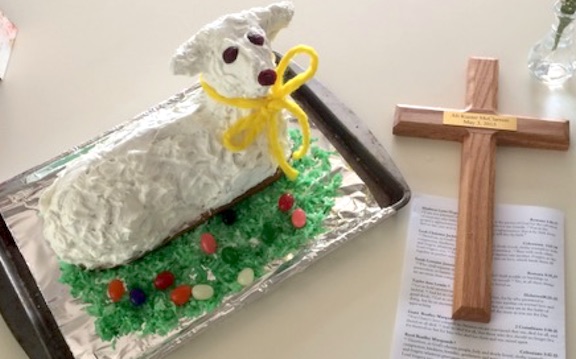
Permit one more quick example of a tradition in our family. A cast iron antique lamb cake mold from generations past continues the tradition of celebrating each Confirmation Day in our family, reminding us of the Lamb of God, Jesus.
It is easy to be excited about the new media featured in these Gospel Outreach With Media online conferences, and to be thankful that God has provided 21st century Christians with these tools to help fulfill the mission imperative Jesus proclaimed on Ascension Day (Matt 28:19). But we can also celebrate, and continue to use traditional media — ink and music, cloth, stone, glass, wood, paint, and even food — as opportunities to proclaim our faith and create new witness that may endure for as many future generations as the Lord permits. Please share some examples from your own families in comments below.
Thus says the LORD: "Stand by the roads, and look, and ask for the ancient paths, where the good way is; and walk in it, and find rest for your souls." Jeremiah 6:16 ESV
Return to original language with "show original" button at top left.
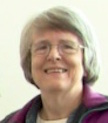
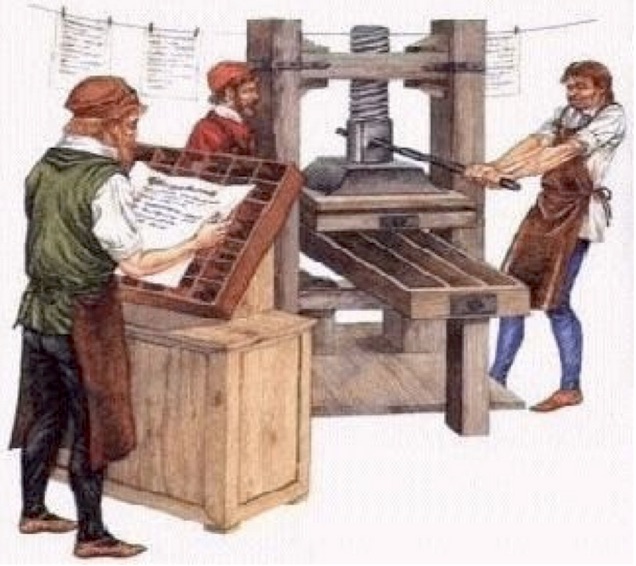
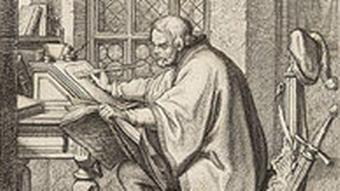

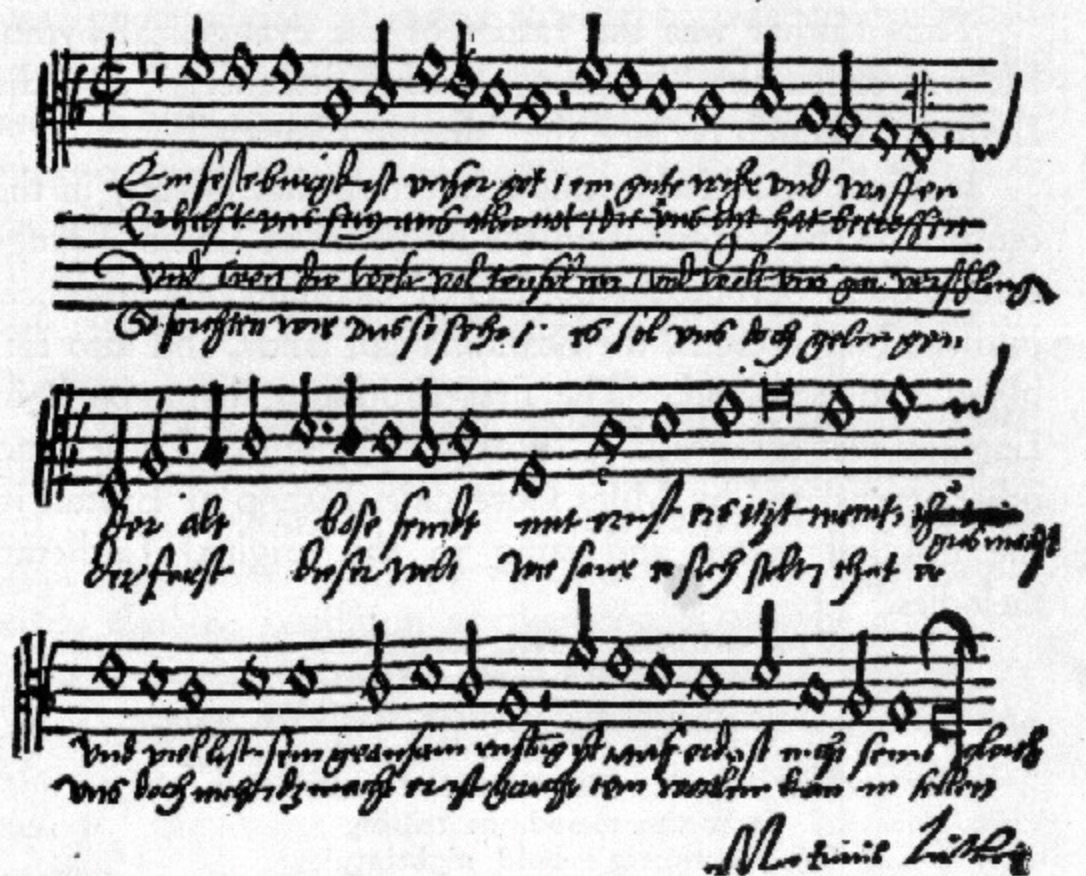


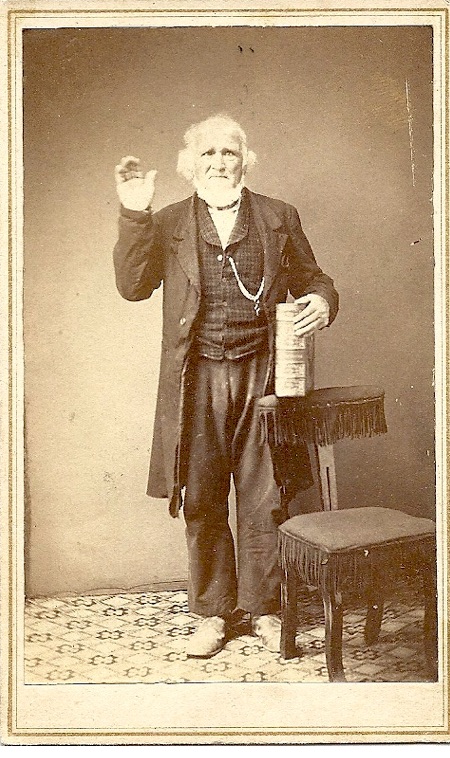
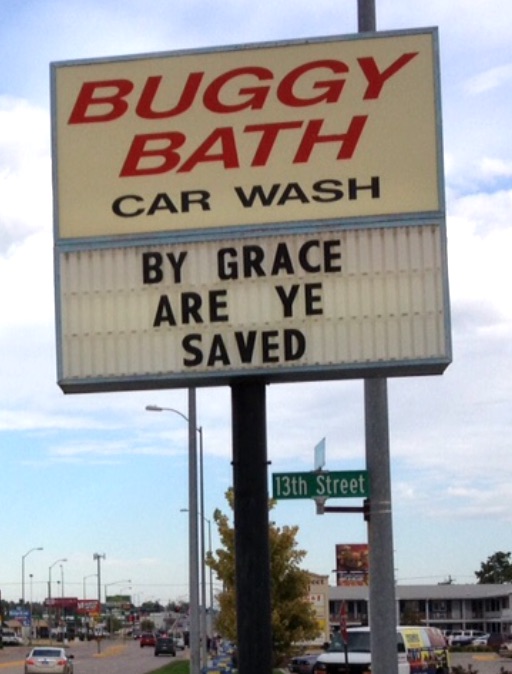

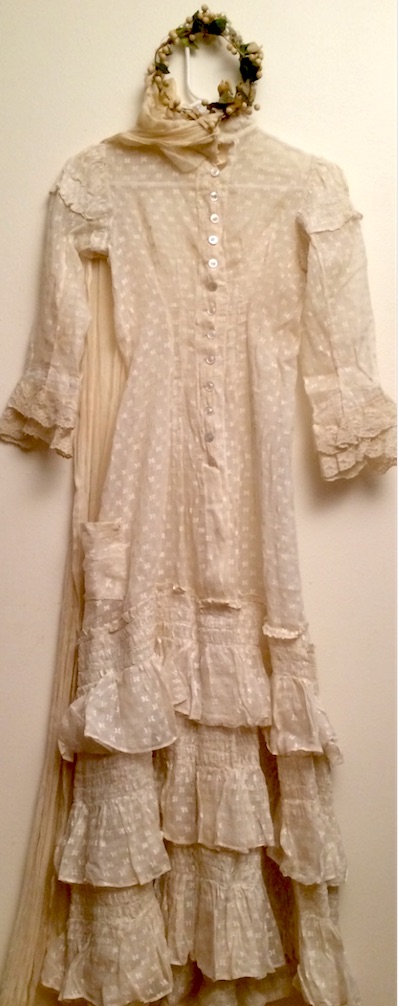
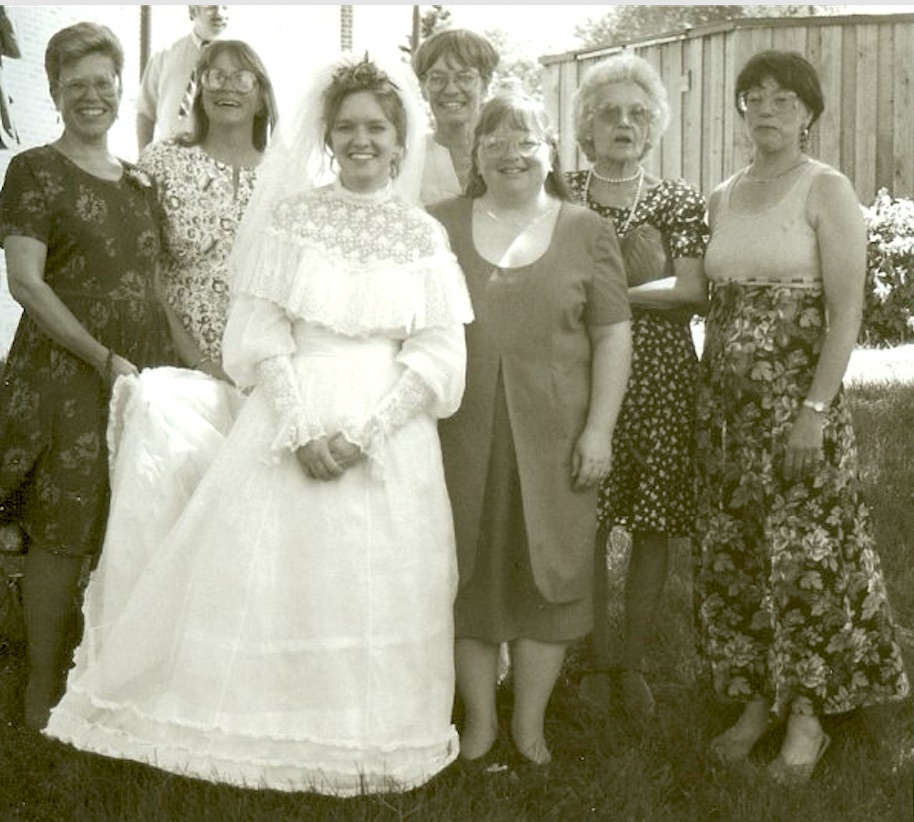
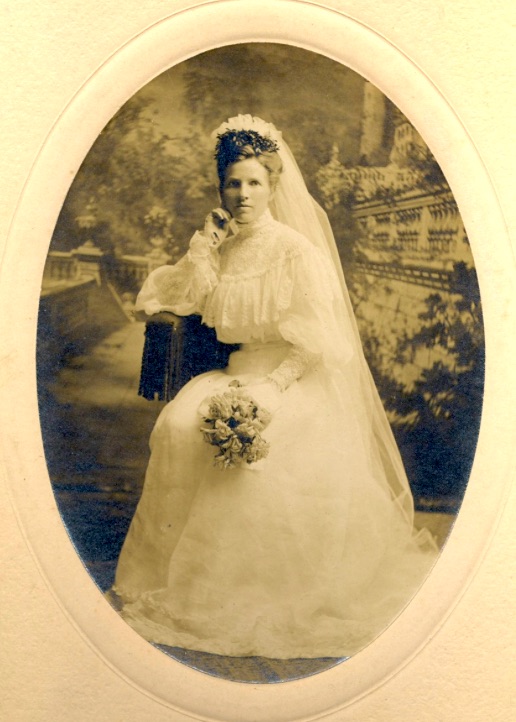
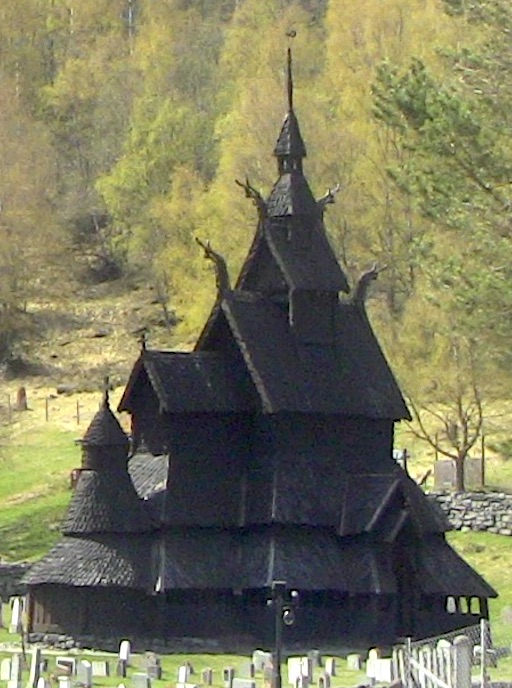
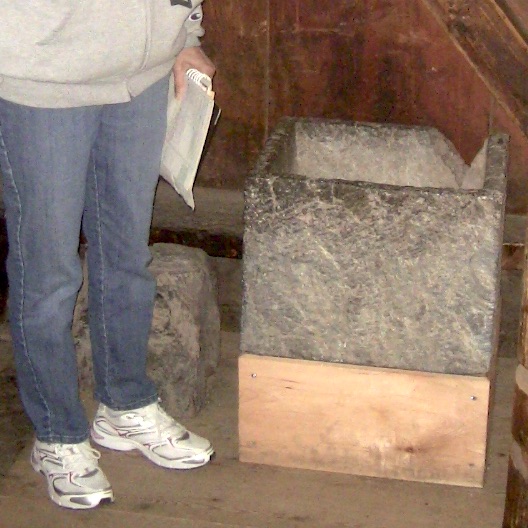
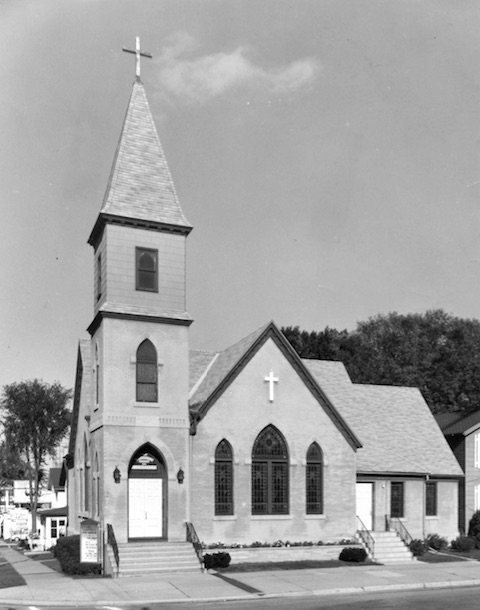
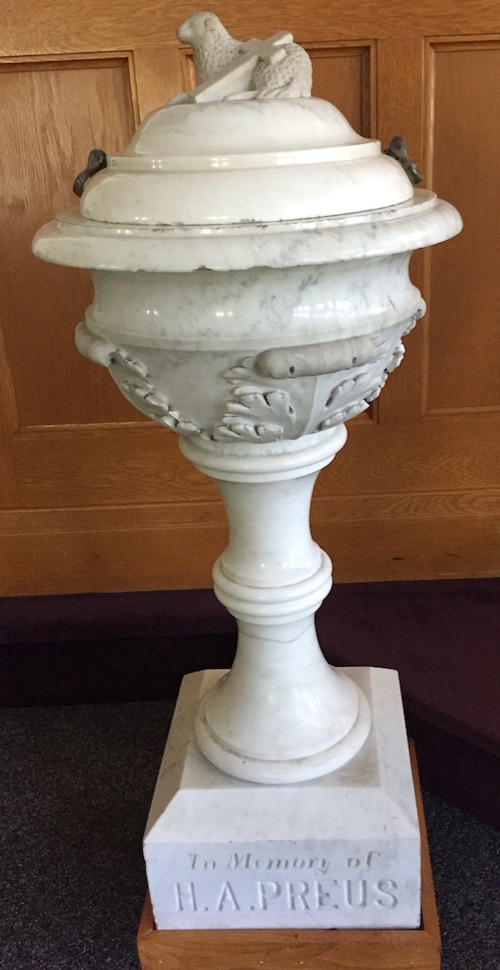
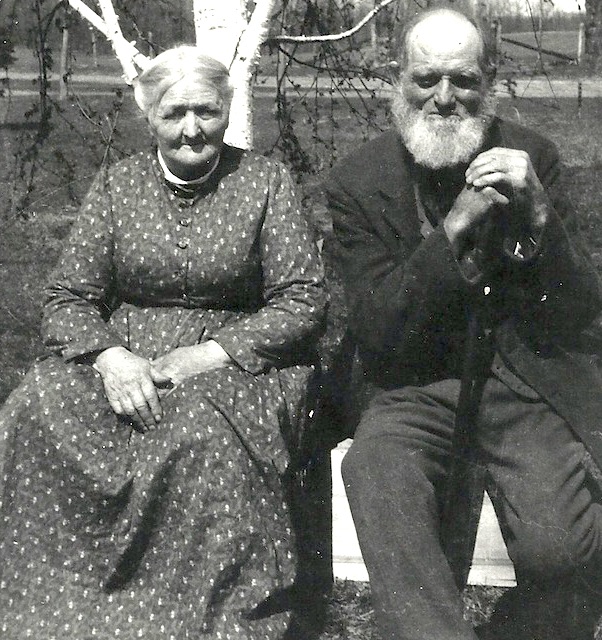
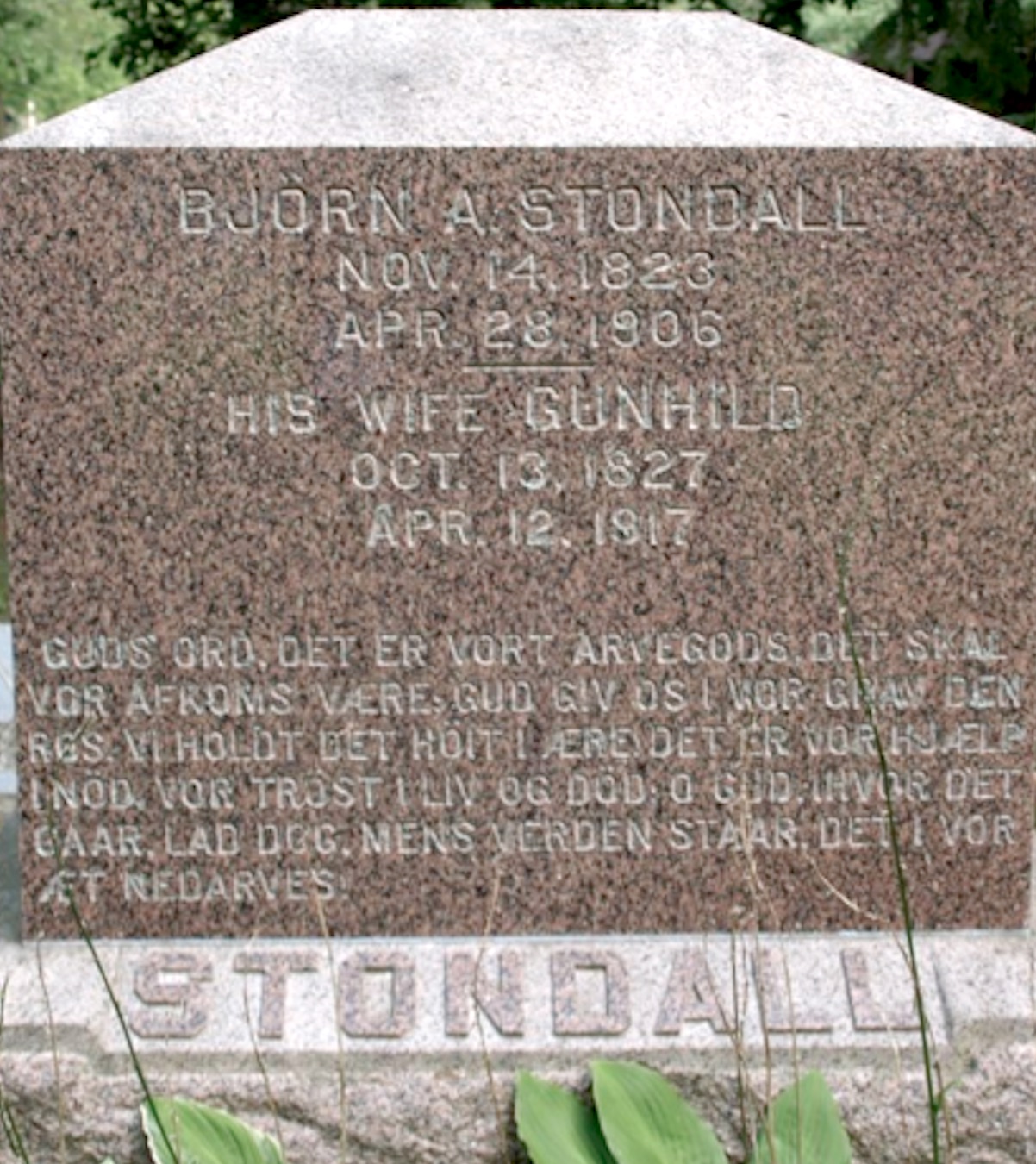


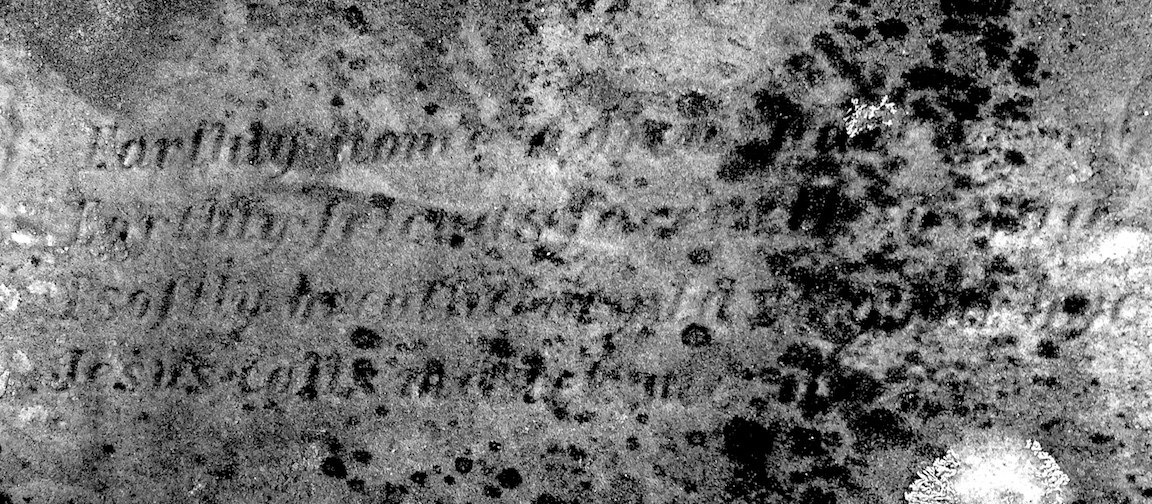

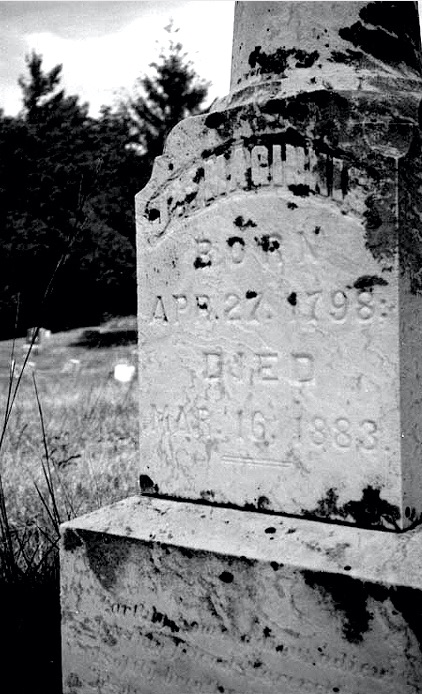

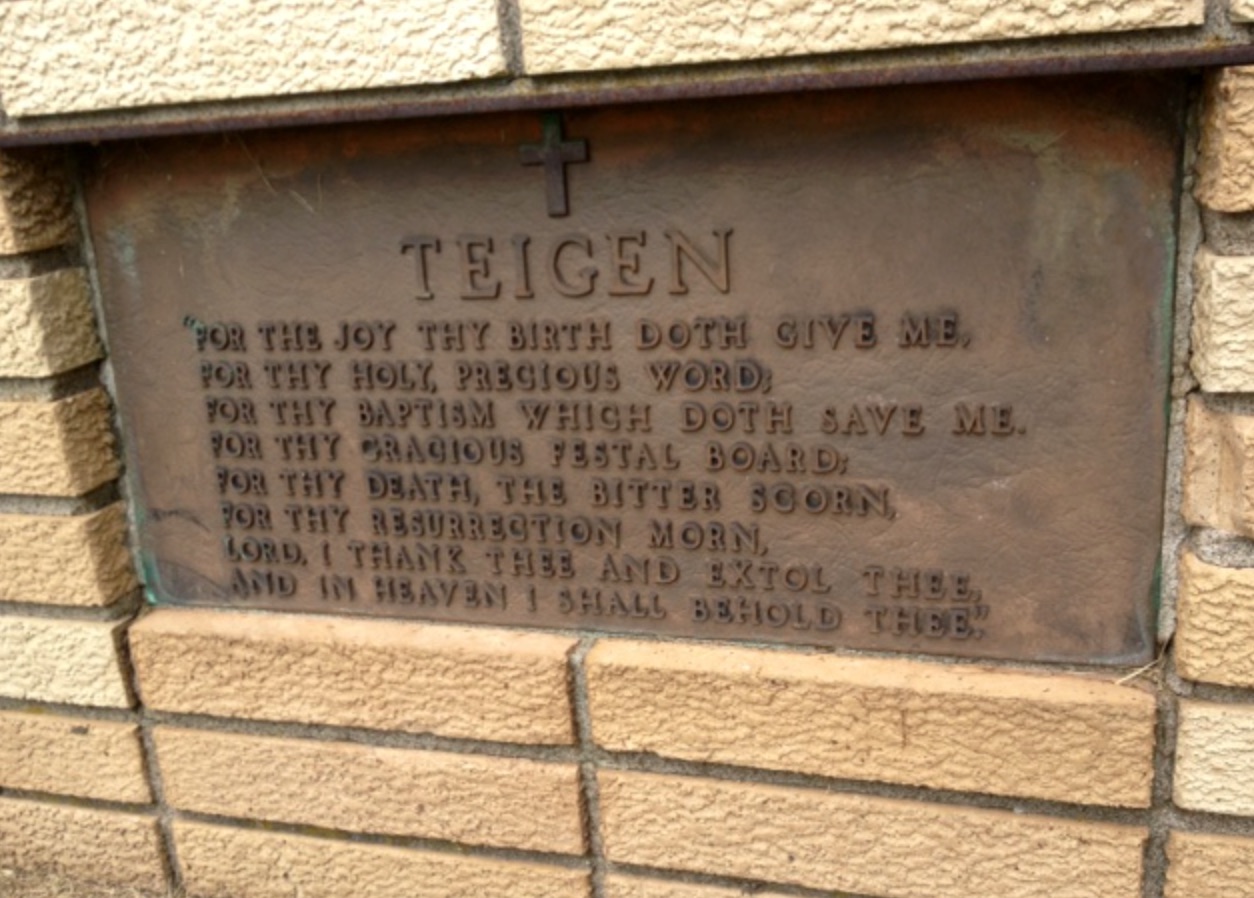




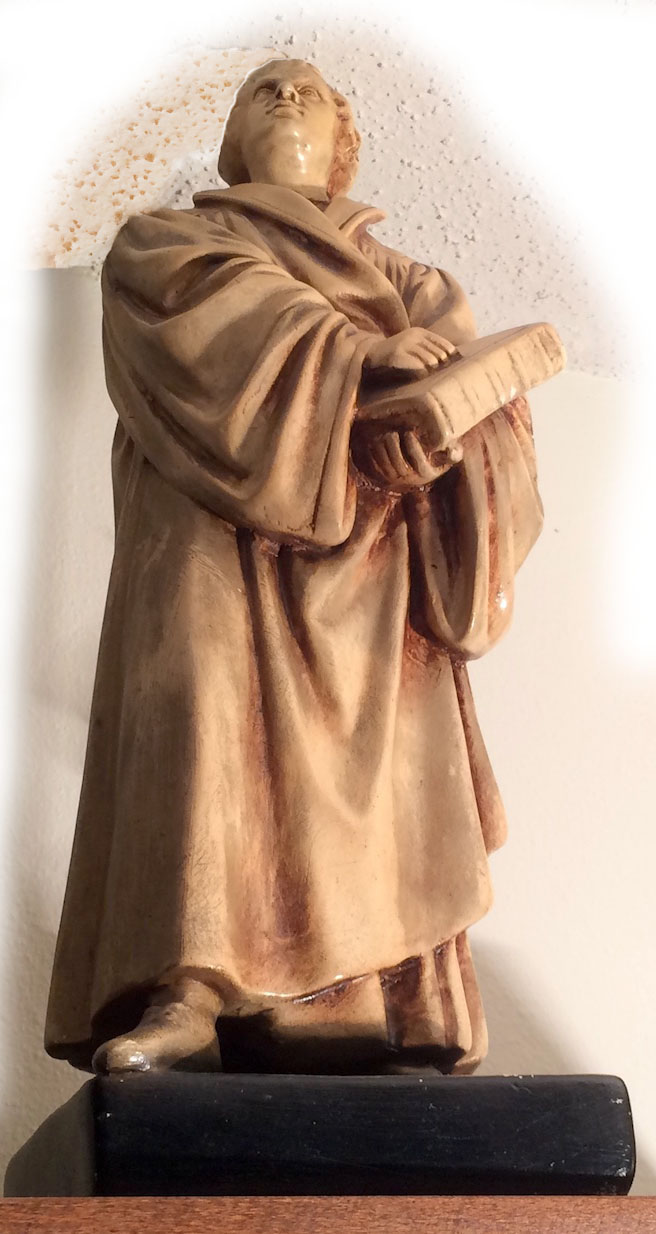

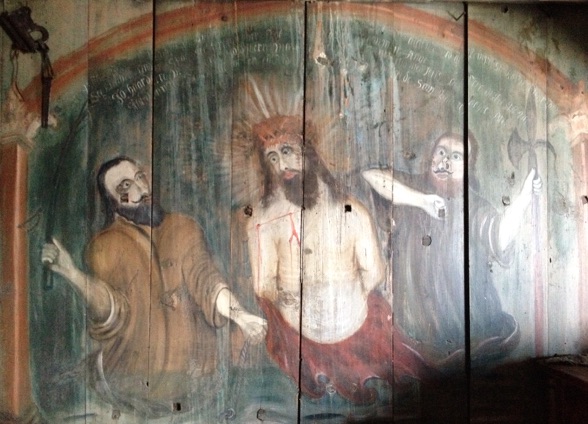
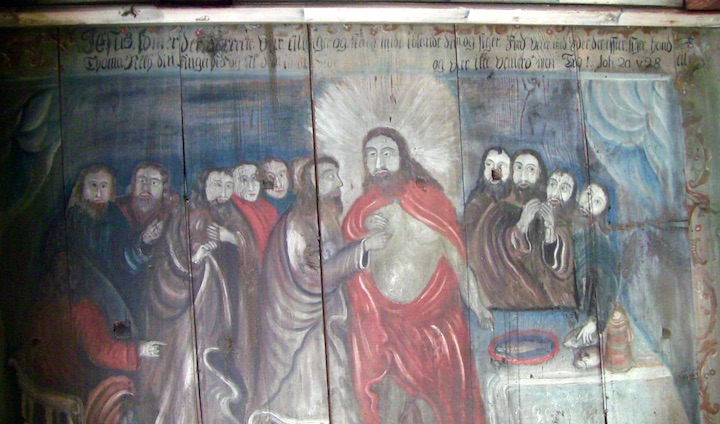
Discussion
I appreciate all the obvious effort you put into this detailed and interesting post!
It’s important to also look back at the past and its media, especially when we can get caught up in today’s technology. It’s easy to forget where media used for spreading the Word came from. This post shows the ordinary things in life can serve as simple and immediate reminders of their origin: from the Creator, who also breathed life into us.
Looking at how media and technology have evolved, do you think it is for the better? Are these traditional methods effective anymore?
Thank you for your contribution to this conference!
For these, passed on before us,
Savior, we Thee adore,
And walking in their footsteps,
Would serve Thee more and more.
I am always thankful to find some of the footsteps left by people in the past. I know although I appreciate a lot of the new technology, the truths of the Bible are shared in many ways - new technology and traditional methods. Both ways can be effective. If you are interested, The ELS Daily Devotions cited above use new technology and are online http://els.org/dailydevotions/ or you can go the the bottom of that page and sign up for them to be delivered free to your email if you want.
I appreciated your attention to traditional forms of media. All of the examples of media in earlier days and even today helped me realize that media is anything but limited. There are a vast number mediums one could use in order to spread the gospel, and I think your examples of the albs, stained glass windows, and even wedding dresses clearly expressed that to me. I had never really considered the significance of wedding dresses in great detail, but as I looked at that example along with many others, I was amazed to see how much traditional media is seen in our everyday lives.
We are often caught up by newer media, but these examples made it obvious that traditional media still plays a huge part in our ministry. I almost feel as if the traditional media, since it is tangible and standing right in front of us at every turn, is silently taking more effect than we may realize. Do you believe we are making a clear enough effort to explain symbols and media well, especially those in our churches such as the symbolism in albs, carvings in altars, or depictions in stained glass? Many times I feel as though these are easy to forget. They just become a design in the altar or just the white robe that the pastor happens to wear.
Thank you for your article and your contribution to the conference!
Thank you so much for such a refreshing article. I especially enjoyed your great great grandfather's epitaph. God's gift of family is amazing and to pass down the gift of the Gospel through family is even better. I hope and pray that God grant you many more opportunity's to travel and see different churches and church artifacts and I guess my only question would be where are you headed to next?
Thank you for your helpful information concerned the use of older media in sharing God's word, not just that long time ago, but also now. It is really fitting to be thinking about the role of media considering that it is the 500th anniversary of the Reformation. It is very interesting to think that those 500 years ago, Martin Luther posted the 95 thesis, where the rise of the printing press made the spreading of the thesis and other writings of him possible.
Something that really caught my eye in your post was concerning the stone. Now days, all I think about for stone carving is grave stones. Sometimes they will have mention to Bible verse or something. What you had posted with the cross and the stones was very neat. What famous stones that you know of today works well to spread the word of God?
Thank you for your post!
With technology advancing to digital work from ink, cloth, and other traditional mediums, how long will people be able to pass family traditions and heirlooms/artifacts to future generations?